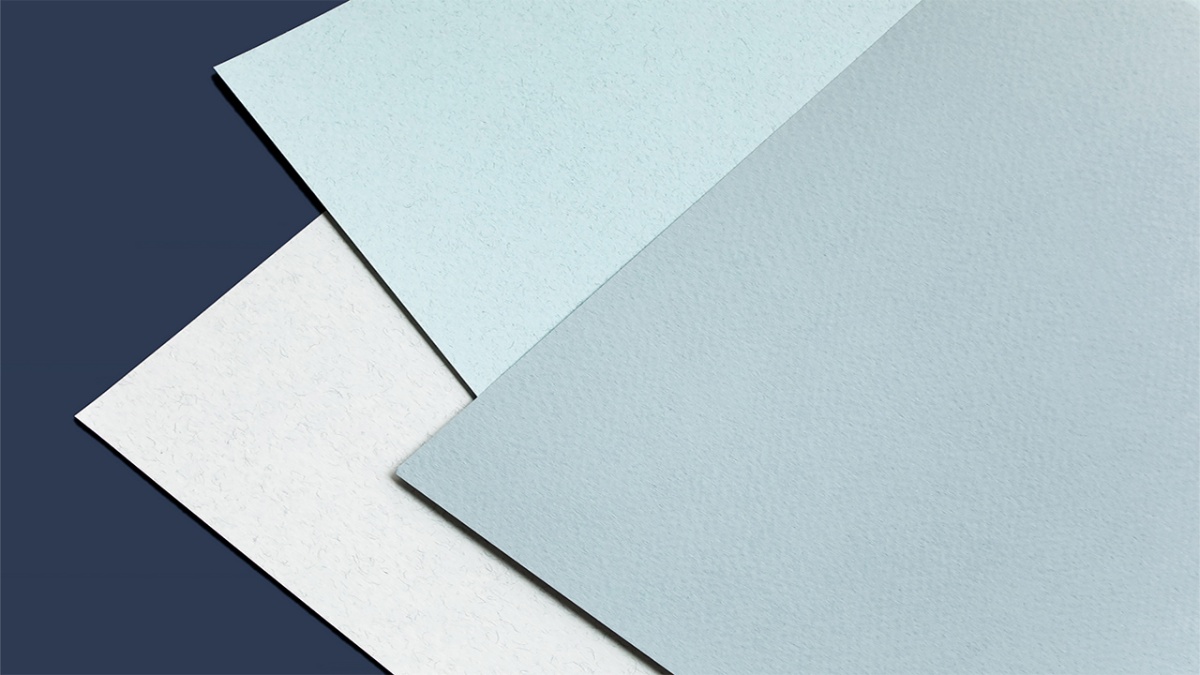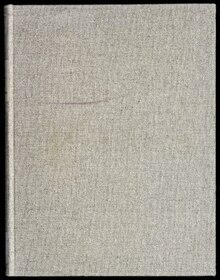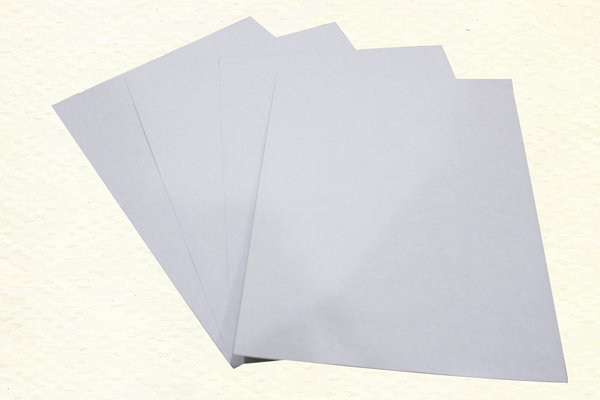Jenis Kertas Bebas Kayu: Apa yang Membuatnya Berkelanjutan?
Jenis Kertas Bebas Kayu
Pengantar Kertas Bebas Kayu
Kertas bebas kayu adalah jenis kertas yang dibuat dengan cara memutihkan lignin dari bubur kayu menggunakan prosedur kimiawi. Lignin adalah zat yang memberi warna pada kayu dan membuatnya kaku. Dengan menghilangkan lignin, kertas bebas kayu menjadi lebih awet, tahan lama, dan tidak mudah menguning seiring waktu.
The proses pembuatan kertas bebas kayu melibatkan proses kimiawi pada bubur kayu untuk menghilangkan kotoran, seperti lignin dan kontaminan lainnya. Proses ini menghasilkan permukaan kertas yang lebih bersih, lebih putih, dan lebih halus. Kertas bebas kayu tersedia dalam berbagai hasil akhir, termasuk kilap, sutra, matte, dan tanpa lapisan. Hasil akhir ini memberikan tekstur dan tingkat kilau yang berbeda untuk memenuhi berbagai persyaratan proyek.
Jenis-jenis Hasil Akhir Kertas Bebas Kayu
Kertas bebas kayu tersedia dalam berbagai polesan yang berbeda-beda, masing-masing dengan karakteristik dan kegunaannya yang unik. Mari kita telusuri perbedaan antara hasil akhir yang mengkilap, sutra, matte, dan tanpa lapisan:
- Hasil akhir mengkilap: Kertas bebas kayu dengan hasil akhir mengkilap memiliki permukaan yang mengkilap dan memantulkan cahaya. Hasil akhir ini meningkatkan kecemerlangan dan kedalaman warna, sehingga cocok untuk proyek yang memerlukan visual berdampak tinggi. Kertas woodfree mengkilap biasanya digunakan untuk proyek pencetakan premium, seperti laporan tahunan, brosur, dan materi pemasaran.
- Hasil akhir sutra: Kertas bebas kayu dengan sentuhan akhir sutra memiliki permukaan yang halus dan agak memantulkan cahaya. Kertas ini menawarkan keseimbangan antara warna cerah dari hasil akhir kilap dan tampilan bertekstur dari hasil akhir matte. Kertas bebas-kayu sutra sering digunakan untuk majalah, katalog, dan materi promosi.
- Hasil akhir matte: Kertas bebas kayu dengan hasil akhir matte memiliki permukaan non-reflektif dengan sedikit tekstur. Ini memberikan penampilan yang canggih dan elegan pada bahan cetakan. Kertas woodfree matte umumnya digunakan untuk buku, manual, dan dokumen yang memerlukan nada yang lebih profesional dan kalem.
- Hasil akhir tanpa lapisan: Bebas kayu kertas dengan lapisan yang tidak dilapisi memiliki tekstur yang kasar dan alami. Ini memberikan kesan taktil dan organik pada bahan cetakan. Kertas tanpa lapisan kayu sering digunakan untuk menulis, alat tulis, dan proyek yang menginginkan tampilan alami dan tulisan tangan.
Aplikasi Terbaik untuk Kertas Bebas Kayu
Kertas bebas-kayu memiliki beragam aplikasi, karena daya tahan dan kualitasnya yang disempurnakan. Berikut ini sebagian skenario yang merekomendasikan kertas bebas kayu:
- Seni: Kertas bebas kayu adalah pilihan yang lebih disukai untuk proyek seni karena permukaannya yang halus dan opasitasnya yang tinggi. Kertas ini memungkinkan reproduksi warna yang tepat dan cerah, sehingga ideal untuk lukisan, gambar, dan karya seni media campuran.
- Pengarsipan: Bebas kayu kertas sangat direkomendasikan untuk mengarsipkan dan menyimpan dokumen penting dokumen. Daya tahannya memastikan penyimpanan jangka panjang tanpa menguning atau rusak. Catatan penting, dokumen historis, dan artefak sering kali disimpan di atas kertas bebas kayu untuk memastikan daya tahannya.
- Proyek pencetakan premium: Kertas woodfree biasanya digunakan untuk proyek pencetakan premium, seperti laporan tahunan, brosur, dan materi pemasaran. Kualitas tinggi dan penampilan profesional dari woodfree meningkatkan kertas dampak dari materi-materi ini dan meninggalkan kesan mendalam bagi para pembaca.
Jenis Kertas Bebas Kayu yang Direkomendasikan untuk Proyek Tertentu
Selain jenis kertas bebas-kayu secara umum, terdapat sejumlah merek dan jenis spesifik yang memenuhi kebutuhan proyek yang berbeda-beda. Berikut ini beberapa yang direkomendasikan jenis kertas bebas kayu:
| Jenis Kertas | Proyek yang Direkomendasikan |
|---|---|
| Kertas Tanpa Karbon Digital Xerox Premium | Faktur, tanda terima, nota pengiriman |
| Kertas Surga 42 | Buku foto, buku seni |
| Kertas Seni Gloss | Proyek yang membutuhkan visual yang jelas dan menarik |
| Kertas Seni Matte | Cetakan kelas atas dengan tampilan yang lebih lembut dan canggih |
Memilih Kertas Bebas Kayu yang Tepat untuk Berbagai Aplikasi
Apabila memilih kertas bebas-kayu yang tepat untuk aplikasi yang berbeda-beda, faktor-faktor seperti tekstur, warna, berat, dan tujuan penggunaan, harus dipertimbangkan. Berikut ini sebagian jenis kertas bebas-kayu spesifik yang sesuai untuk berbagai aplikasi:
| Jenis Kertas | Aplikasi yang Cocok |
|---|---|
| Maxisatin | Brosur, majalah, materi promosi |
| Kertas EOS | Buku, jurnal |
| Bebas kayu Kertas offset | Tesis, buku teks, agenda |
| Kertas Kraft | Tas belanja, amplop, kemasan makanan |
Teknik Pencetakan dan Kualitas Kertas
Pilihan kertas bebas kayu bergantung pada teknik pencetakan yang digunakan. Teknik pencetakan yang berbeda-beda memerlukan sifat kertas yang berbeda-beda untuk mencapai hasil yang optimal. Berikut ini ada beberapa pertimbangan utama:
| Teknik Pencetakan | Kualitas Kertas yang Sesuai |
|---|---|
| Pencetakan offset | Kertas berkualitas tinggi dan tahan lama |
| Pencetakan digital | Permukaan yang halus untuk distribusi tinta yang presisi |
| Pencetakan inkjet | Kejernihan, ketajaman, dan saturasi warna yang luar biasa |
Dampak Lingkungan dan Keberlanjutan Kertas Bebas Kayu
Kertas bebas kayu memiliki dampak lingkungan yang lebih rendah dibandingkan dengan kertas tradisional karena tidak adanya serat kayu dalam komposisinya. Berikut ini beberapa poin penting mengenai dampak lingkungan dan keberlanjutan kertas bebas kayu:
- Tidak adanya serat kayu pada kertas bebas kayu mengurangi kebutuhan penebangan pohon, sehingga lebih ramah lingkungan. pilihan ramah lingkungan.
- The Proses pembuatan kertas bebas kayu yang menggabungkan keberlanjutan praktik-praktik, seperti menggunakan pemutihan kimiawi untuk menghilangkan lignin dan kotoran lainnya tanpa menurunkan kualitas kertas.
- Kertas bebas kayu sering kali dibuat dari bubur kertas yang bersumber dari hutan yang dikelola secara berkelanjutan, sehingga berkontribusi lebih jauh pada sifat ramah lingkungannya.
- Daya tahan dan umur panjang kertas bebas kayu mengurangi kebutuhan untuk sering mencetak ulang dan mengganti kertas, sehingga meminimalkan pemborosan.
Kesimpulannya, kertas bebas kayu merupakan opsi serbaguna dan berkelanjutan untuk beragam proyek pencetakan. Karakteristiknya yang mulus dan tahan lama, membuatnya ideal untuk proyek seni, pengarsipan, dan pencetakan premium. Dengan berbagai hasil akhir dan jenis yang tersedia, kertas bebas-kayu menawarkan beragam luas opsi untuk memenuhi persyaratan proyek tertentu. Baik Anda membuat buku foto, brosur, atau dokumen arsip penting, kertas woodfree memberikan kualitas dan daya tahan yang diperlukan untuk hasil yang optimal.
Tanya Jawab tentang Jenis Kertas Bebas Kayu
Apa persamaan untuk menghitung Precision dan Recall dalam konteks NLP?
Dalam NLP, Precision dihitung sebagai tp/(tp+fp), dan Recall dihitung sebagai tp/(tp+fn), di mana tp mewakili jumlah token yang sama antara jawaban yang benar dengan prediksi, fp adalah jumlah token dalam prediksi tetapi tidak ada dalam jawaban yang benar, dan fn adalah jumlah token dalam jawaban yang benar tetapi tidak ada dalam prediksi.
Bagaimana berbagai jenis lapisan akhir Woodfree Paper dibedakan satu sama lain?
Lapisan Gloss, Lapisan Sutra, Lapisan Matte, dan Lapisan Tanpa Pelapis adalah berbagai jenis lapisan akhir Woodfree Paper, masing-masing dengan karakteristik dan kegunaan yang unik.
Apa saja jenis Kertas Woodfree yang direkomendasikan untuk proyek tertentu?
Xerox Premium Digital Carbonless Paper, kertas Heaven 42, Gloss Art Paper, dan Matte Art Paper adalah beberapa jenis Kertas Bebas Kayu yang direkomendasikan untuk proyek-proyek tertentu berdasarkan karakteristik dan aplikasinya.
Bagaimana pilihan Woodfree Paper berdampak pada berbagai teknik pencetakan?
Woodfree Paper berkinerja baik dengan pencetakan Offset, pencetakan Digital, dan pencetakan Inkjet karena permukaannya yang halus, daya tahan, dan kualitas cetak yang tinggi.
Mengapa Woodfree Paper dianggap sebagai pilihan yang berkelanjutan untuk proyek pencetakan?
Woodfree Paper dianggap lebih berkelanjutan daripada kertas tradisional karena proses pembuatannya yang menggabungkan praktik-praktik keberlanjutan, seperti menggunakan pemutihan kimiawi untuk menghilangkan kotoran tanpa menurunkan kualitas, dan bersumber dari hutan yang dikelola secara berkelanjutan.
Kertas bebas kayu bersifat berkelanjutan, dengan berbagai sentuhan akhir dan aplikasi untuk proyek pencetakan. Hasil akhir yang mengkilap, sutra, matte, dan tanpa lapisan memenuhi kebutuhan yang berbeda-beda. Kertas ini ideal untuk karya seni, pengarsipan, dan pencetakan premium seperti laporan tahunan. Jenis khusus seperti Kertas Digital Premium Xerox dan Kertas Seni Matte menawarkan keunggulan yang berbeda. Memilih kertas bebas-kayu yang tepat tergantung pada teknik dan aplikasi pencetakan. Dampak lingkungannya rendah karena praktik keberlanjutan. Kertas bebas kayu tetap menjadi pilihan yang ramah lingkungan untuk pilihan pencetakan yang sadar lingkungan.





